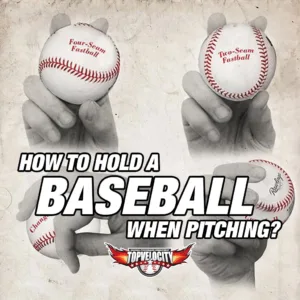 Searching for information on how to hold a baseball when pitching? This is the perfect article!
Searching for information on how to hold a baseball when pitching? This is the perfect article!
Every aspiring baseball pitcher has visions of standing on the mound, confidence surging, as they deliver that perfect, game-changing pitch. The thrill of the crowd, the satisfaction of outsmarting the batter, and the joy of contributing to the team's success all hinge on that one moment. But what many don't realize is that the foundation of that dream pitch lies in the details—specifically, the grip.
The art of holding a baseball when pitching is often overlooked, yet it plays a crucial role in the game. The grip dictates the ball's trajectory, spin, and speed. While natural talent and rigorous training are essential, understanding the nuances of finger position, thumb placement, and seam alignment can be the deciding factor between an average throw and a spectacular one. As they say, it's all in the wrist, but more accurately, it's all in the grip.
How to Hold a Baseball When Pitching?
Pitching, often misconceived as merely a display of arm strength, is a nuanced art that involves various intricate elements, with the grip being paramount among them. While a powerful arm can with the lower half send the ball flying towards the batter with impressive speed, it's the grip that provides the finesse and control, shaping the baseball's trajectory as it cuts through the air. The manner in which a pitcher's fingers wrap around the baseball, the pressure applied, and the seam's orientation can all influence the ball's final path. Furthermore, the grip is instrumental in determining the spin of the baseball, which, in turn, can make the difference between a straight pitch and one that curves or drops deceptively. Thus, mastering the grip becomes as essential as building arm strength for anyone aspiring to be a top-notch pitcher.
Importance of Finger Position: How to hold a baseball when pitching?
 The fingers play a pivotal role in the art of pitching. As the primary contact points with the baseball, their position significantly impacts the outcome of the pitch. The way your fingers interact with the ball can determine its velocity, trajectory, and spin. By mastering finger placement, a pitcher can not only increase accuracy but also introduce a variety of pitches into their repertoire. Every slight movement or change in pressure can transform an ordinary pitch into a swinging strike.
The fingers play a pivotal role in the art of pitching. As the primary contact points with the baseball, their position significantly impacts the outcome of the pitch. The way your fingers interact with the ball can determine its velocity, trajectory, and spin. By mastering finger placement, a pitcher can not only increase accuracy but also introduce a variety of pitches into their repertoire. Every slight movement or change in pressure can transform an ordinary pitch into a swinging strike.
- Role of the Index and Middle Fingers
The index and middle fingers are crucial players in the game of pitching. They are primarily responsible for imparting spin to the baseball, which in turn affects its movement as it travels towards the batter. Depending on their position on the ball, these fingers can make it dive, rise, curve, or slide. Adjusting their position even slightly can change a fastball into a curveball or a slider into a cutter. Mastery over the placement and pressure exerted by these two fingers opens up a world of possibilities for the pitcher, allowing them to keep batters guessing and off-balance. - Impact of the Ring and Pinky Finger
While the ring and pinky fingers may not be at the forefront of pitching techniques, their contribution is indispensable. These fingers act as stabilizers, ensuring that the ball remains balanced and secure in the pitcher's hand. Especially when throwing off-speed pitches, which require a delicate touch and controlled release, the ring and pinky fingers come into play. They help maintain the ball's intended trajectory and prevent any unintended wobbles or deviations. Ignoring the role of these fingers can result in inconsistent pitches, so understanding their importance and incorporating them effectively is crucial for a pitcher's success.
Crucial Role of the Thumb: How to hold a baseball when pitching?
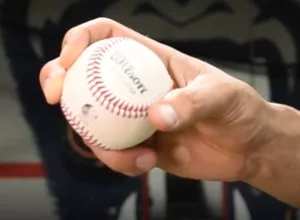 While often regarded as just a supporting player in the art of pitching, the thumb is much more than a mere base of support for the baseball. It serves a vital function that goes beyond simply anchoring the ball in the pitcher's hand. The thumb, in essence, can be the silent game-changer in a pitcher's arsenal, working subtly but effectively to influence the outcome of a pitch.
While often regarded as just a supporting player in the art of pitching, the thumb is much more than a mere base of support for the baseball. It serves a vital function that goes beyond simply anchoring the ball in the pitcher's hand. The thumb, in essence, can be the silent game-changer in a pitcher's arsenal, working subtly but effectively to influence the outcome of a pitch.
- Thumb's Influence on Pitch Spin
One of the thumb's most significant contributions is its influence on the baseball's spin. The pressure exerted by the thumb, along with its positioning, can greatly determine the spin rate and direction of the pitch. For instance, a curveball, which relies heavily on its downward spin, can be manipulated by subtle changes in thumb pressure. By adjusting the thumb's position slightly upwards or downwards on the seam, a pitcher can control the intensity and direction of the spin, thus deciding how sharp or loose the curve will be. It's these minute adjustments, often unnoticed by the untrained eye, that can make all the difference in deceiving a batter and securing that crucial strikeout.
Finger Tips versus Deep in Hand: How to hold a baseball when pitching?
 The nuances of holding a baseball when pitching go beyond just finger placement on the seams. The depth at which the ball is held in the hand is equally vital and can significantly influence the outcome of a pitch. Whether gripped near the fingertips or nestled deeper in the hand, each method offers unique advantages, catered to different types of pitches and strategic intentions.
The nuances of holding a baseball when pitching go beyond just finger placement on the seams. The depth at which the ball is held in the hand is equally vital and can significantly influence the outcome of a pitch. Whether gripped near the fingertips or nestled deeper in the hand, each method offers unique advantages, catered to different types of pitches and strategic intentions.
- Benefits of Holding with Finger Tips
Gripping the ball with the fingertips is akin to the finesse approach in pitching. This technique allows pitchers to achieve greater spin and precision on their throws. By holding the ball lightly with the fingertips, there's less resistance upon release, leading to an enhanced spin rate. This is particularly advantageous for pitches that rely on movement to deceive the batter, such as curveballs, sliders, and changeups. The fingertip grip also offers the pitcher a heightened sense of control, enabling them to place the ball more accurately within the strike zone or paint the corners to confound batters. - Advantages of Holding Deep in Hand
On the other side of the spectrum is the deep grip, where the baseball is held more securely within the confines of the hand. This method is synonymous with power and control. By holding the ball deep in the hand, a pitcher can hold onto the ball longer for a better spin if needed. This technique is especially favored when throwing curveballs, where spin is the primary objective. With the ball nestled securely in the hand, pitchers can exert more spin, propelling the baseball towards the plate with movement, challenging batters to adjust to the change of direction.
Understanding Baseball Seam Position: How to hold a baseball when pitching?
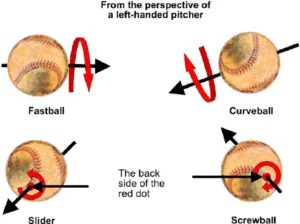 The art of pitching is not just about arm strength, grip, or technique alone; the subtle orientation of the baseball's seam plays a pivotal role in determining the behavior and trajectory of the ball once it leaves the pitcher's hand. The seam's position can influence factors like drag, lift, and overall ball movement, which, in turn, can be the deciding factor between a strike and a home run.
The art of pitching is not just about arm strength, grip, or technique alone; the subtle orientation of the baseball's seam plays a pivotal role in determining the behavior and trajectory of the ball once it leaves the pitcher's hand. The seam's position can influence factors like drag, lift, and overall ball movement, which, in turn, can be the deciding factor between a strike and a home run.
- How Seam Affects Pitch Movement
As the baseball cuts through the air, the seam's interaction with the surrounding atmosphere can lead to various movements in the ball's path. This phenomenon is largely due to the Magnus effect, where the spinning ball experiences a force perpendicular to its motion because of the pressure difference created by the seam's interaction with the air. As a result, pitches can curve, drop, rise, or even tail away based on the direction and speed of the spin, and crucially, the position of the seam. - Seam Orientation for Different Pitches
Different pitches capitalize on the seam's orientation to achieve their desired outcomes. Take, for instance, the four-seam fastball and the cut fastball. The four-seam fastball, with its perpendicular seam orientation, is designed to stay straighter and typically has a rising effect due to its spin, making it challenging for batters to gauge. On the other hand, the cut fastball, with seams aligned more horizontally, will often result in more lateral movement, making the ball tail in or away from the batter, depending on the pitcher's hand orientation. This variance in behavior, primarily attributed to seam orientation, underscores the importance of understanding and mastering the nuances of the baseball seam for aspiring pitchers.
Understanding the Science of Baseball Pitching Grips: How to hold a baseball when pitching?
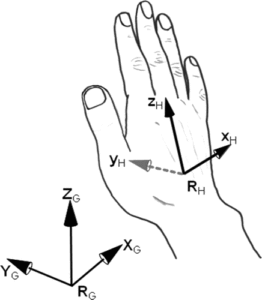 In an exhaustive exploration into the dynamics of baseball pitching, Jinji, Sakurai, and Hirano (2011) delved into the multifaceted elements that dictate the spin axis of a fastball. While previous findings by Jinji and Sakurai (2006) pointed to a broad range of variation in the spin axis among collegiate pitchers, this study further highlighted the variability in the direction of the spin axis. The study outlined that the changes pitchers make in their grip, wrist, and forearm movements can influence the ball's speed, spin rate, and the direction of its spin axis. Interestingly, even when a pitcher aims for consistency, variations in the spin axis can lead to different trajectories.
In an exhaustive exploration into the dynamics of baseball pitching, Jinji, Sakurai, and Hirano (2011) delved into the multifaceted elements that dictate the spin axis of a fastball. While previous findings by Jinji and Sakurai (2006) pointed to a broad range of variation in the spin axis among collegiate pitchers, this study further highlighted the variability in the direction of the spin axis. The study outlined that the changes pitchers make in their grip, wrist, and forearm movements can influence the ball's speed, spin rate, and the direction of its spin axis. Interestingly, even when a pitcher aims for consistency, variations in the spin axis can lead to different trajectories.
A pivotal observation was the intricate nature of pinpointing where force is applied on the baseball due to the multiple contact points of fingers on the ball. Notably, the common grip technique for a four-seam fastball, as described in coaching literature, instructs that fingers should be placed on the ball's top, with the thumb positioned right beneath it. While the study acknowledged this grip, the emphasis shifted to examining the roles of the hand and the mechanisms determining the spin axis of the fastball.
Stevenson (1985) highlighted that the thumb detaches from the ball roughly 6 ms prior to its release. This phase coincides with the time the spin axis angles were observed to correlate most closely with hand angles. As the hand begins to open, the ball either rolls or slides against the hand. It then spins on a plane formed by the palm and fingers, aligning its spin axis parallel to this plane. This spin is crucial as it introduces an element of unpredictability in the ball's trajectory, making it challenging for batters.
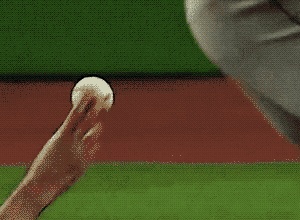
Fastball stays up, Curveball moves down, and Slider runs into hitter.
The study also emphasized the significance of the hand's orientation during a pitch. For a more forceful lift, the pitcher's palm should face the home plate. This orientation is influenced by several factors: the position of the stride foot, pelvis rotation, shoulder angles, and forearm movements. Typically, fastballs tend to veer towards the third base due to a consistent negative elevation of the spin axis. This deviation is heightened in sidearm and underhand pitchers because of their unique hand orientation, resulting in balls that not only release lower but also veer more towards the third base.
Lastly, the study brought to light a crucial coaching insight: the orientation of the hand during the moment of maximal external rotation plays a pivotal role in determining the fastball's spin axis direction. Given the arm's high velocity shortly before releasing the ball, adjusting the spin axis can be challenging for pitchers. However, the motion is more controllable at the peak of external rotation, suggesting that to enhance the spin axis direction, coaches should focus on the pitching motion during this crucial phase.
Unlock Your Pitching Potential with TopVelocity Patreon Pro
 Every pitch you throw carries the culmination of training, dedication, and technique. But are you accessing the full spectrum of your potential? Dive deeper into the mechanics of pitching with the TopVelocity Patreon Pro. From mastering the art of pitch grips to detailed instructional videos, our platform is meticulously curated to help you elevate your game.
Every pitch you throw carries the culmination of training, dedication, and technique. But are you accessing the full spectrum of your potential? Dive deeper into the mechanics of pitching with the TopVelocity Patreon Pro. From mastering the art of pitch grips to detailed instructional videos, our platform is meticulously curated to help you elevate your game.
What's more, pitching isn't just about what happens on the mound. It's an ongoing journey of analysis, refinement, and growth. And to aid you in this quest, our membership includes personalized video analysis. Get real-time feedback on your techniques, identify areas of improvement, and receive actionable insights directly from professionals. This isn't just another pitching resource; it's a tailored experience to drive your pitching journey forward.
Don't let greatness elude you by a mere twist of the wrist or a slight shift in posture. Perfect your pitch and maximize your potential. Join the TopVelocity Patreon Pro today and redefine what's possible in your pitching career.
Reference
Jinji, T., & Sakurai, S. (2006). Baseball: direction of spin axis and spin rate of the pitched baseball. Sports Biomechanics, 5(2), 197-214.
Jinji, T., Sakurai, S., & Hirano, Y. (2011). Factors determining the spin axis of a pitched fastball in baseball. Journal of sports sciences, 29(7), 761-767.
Stevenson, J. M. (1985). Finger release sequence for fastball and curveball pitches. Canadian Journal of Applied Sport sciences. Journal Canadien des Sciences Appliquees au Sport, 10(1), 21-25.




